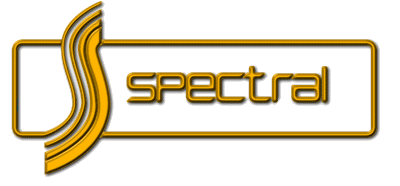

The Spectral SDR-4000SL Reference CD Processor System
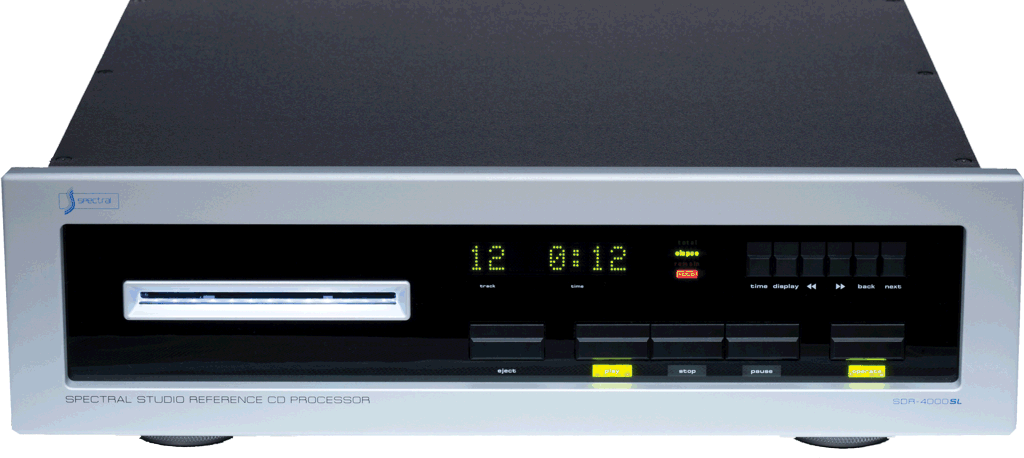
The SDR-4000SL Reference CD Processor is a limited edition reference instrument crafted in the Spectral engineering department and individually programmed and calibrated by its designer Keith Johnson. Relatively unlimited time and resources have been utilized to achieve our ultimate objective: Engineer the most sophisticated and sonically accurate CD player in the audio industry. Those that are familiar with Keith Johnson’s credentials and previous achievements in digital design know this objective is not taken casually or an idle boast.
As with previous editions of our SDR components from the 1980s and 1990s, such as the SDR-1000 and SDR-2000 reference digital components, it takes our engineers multiple design generations to arrive at the final and ultimate model. The SDR-4000SL has been previously produced in two highly regarded versions, the original SDR-4000 and the revised SDR-4000 Pro which incorporates the exclusive HDCD “Long Filter” technology. It has taken Spectral engineers four years more to develop the final and most uncompromising generation, the SDR-4000SL. In the SDR-4000SL, Keith Johnson and the design team address their remaining performance objectives to create the ultimate SDR-4000 and redefine the possibilities of the redbook CD medium in the finest music systems.
The SDR-4000SL Reference CD Processor is Spectral’s ultimate compact disc player, completing the Spectral Digital Reference system begun with the SDR-2000 Digital Processor. The development program for the SDR components was initiated over 15 years ago with the introduction of the Spectral SDR-1000 Reference Disc System, the industry’s first truly high-end compact disc playback system. The innovative SDR-1000 was years ahead of its time, pioneering fundamental processing breakthroughs such as balanced decoding and conjugate correction filters. More recently, the ambitious SDR-2000 Professional Processor has stunned the audio industry with its technical advances and resolving power. Sharing its uncompromising circuit architecture with the historic HDCD recording system by Pacific Microsonics, the Spectral SDR-2000 is widely considered to be the finest digital processor available as well as the acknowledged reference for High Definition Compatible Digital recordings.
The arrival of the SDR-4000SL Reference CD Processor culminates the SDR program at Spectral and achieves the final integration of our high resolution digital technology. Supporting the challenge are new generation component technologies and state-of-the-art test systems to push forward the envelope of digital audio performance. Like other Spectral SDR components, no detail or expense has been spared in the SDR-4000SL to achieve the status of a true reference.
Why A Reference CD Player Is Still Necessary
With
the recent introduction of digital playback formats for consumers such as DVD-A
and SACD, it would seem only logical that new digital audio playback components
should support these new recordings as well as the established compact disc
format. In truth, for general applications, affordable universal disc players
may well become the accepted norm for playback of digital audio recordings.
In-depth examination of these new high-bit technologies, however, reveals
stunning performance limitations when considered for applications of the highest
quality. The mass-market origin of the new high-bit digital audio technologies
precludes their inclusion in the finest 16 bit CD playback applications due to
an array of engineering limitations and performance compromises. Simply put,
24/96 digital audio technology reproduces conventional 16 bit compact disc
recordings poorly. In point of fact, reproduction of CD recordings in today’s
DVD-A and SACD players is arguably a step backwards, with poorer sonics than
previously achieved in CD only players and processors.
We find the technical compromises of the high-bit systems far too serious to ignore when reproducing compact disc recordings. An important musical heritage has been captured in the thirty-two years since the introduction of the compact disc digital format, containing some of the finest musical performances of the twentieth century. It is technically clear that the best reproduction of these compact disc recordings will only be accomplished with dedicated CD playback components. Developing a dedicated CD playback system capable of achieving ultimate possible reproduction from compact disc recordings is the goal of the Spectral SDR-4000SL Reference CD Processor. Ultimate reproduction from compact disc recordings is assured by the SDR-4000SL Reference CD Processor.
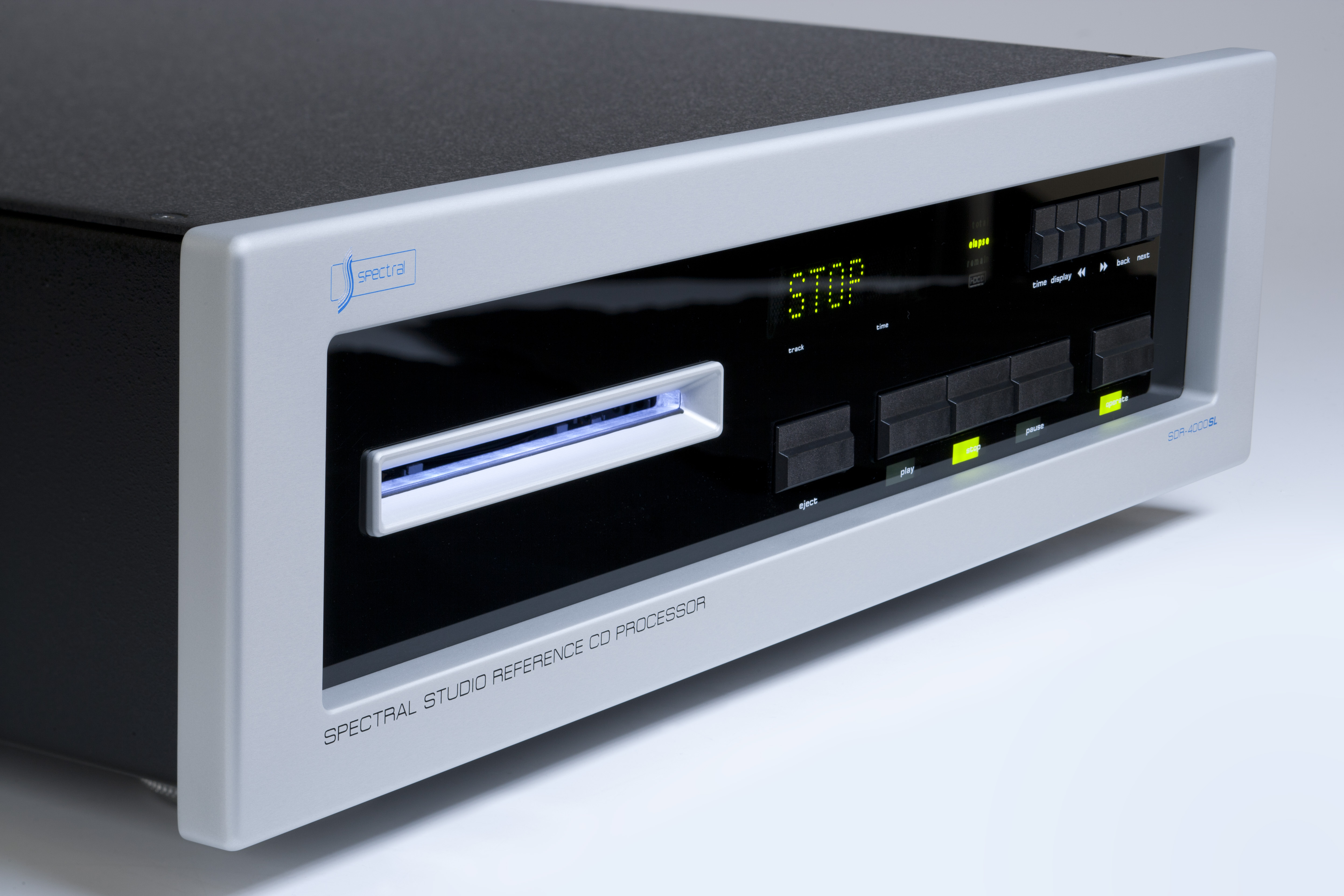
Design Fundamentals: The Spectral Solution
As digital audio design has matured,
cookbook design compromises and cost cutting have become entrenched in products
at all price levels. Circuit compromises believed necessary for design
practicality are ubiquitous in even today’s most sovereign high-end digital
designs. The endless engineering debate concerning what constitutes superior
circuit performance is ironic considering the relative ease with which superior
music reproduction is identified by the human ear. We believe the solution to
the dilemma of digital audio quality lies in the design fundamentals, examining
every design convention to identify a superior solution.
In approaching the
engineering of the analog sections of a quality digital audio component you
would, of course, expect unanimous agreement concerning the use of fine discrete
amplification circuits for all analog stages, just as those implemented in any
quality high-end preamp or amplifier. The surprising reality is that virtually
all of today’s digital audio products, processors and CD players utilize
integrated circuit amplifiers (IC op-amps) for most, if not all, of their analog
stages. The use of low voltage, low bias integrated circuit amplifiers is the
de-facto standard in the digital audio today.
Audiophiles and
traditionalists may be shocked at the use of IC chips in high-end digital
components due to the poor performance of monolithic circuits. However, in
reality it is almost impossible to design practical fully discrete amplifiers to
replace inexpensive ICs designed as I/V, equalizer and output amplifiers in
digital audio components. For those reasons virtually all digital audio products
use IC chips in the analog signal path.
Just how good can digital audio be? In reality, it is rather difficult to say since circuit quality compromises are virtually universal. Digital audio is always heard through the sonic filter of mediocre integrated circuit amplification and buffers. Is there any other option than the compromise of IC amplification? Yes, Spectral engineers have developed all-discrete, high performance analog circuitry for the SDR-4000SL CD processor. All analog sections from DAC amplifier and equalizer to high-level output stage are discrete and uncompromised by IC monolithic circuits. Now analog sonics and performance are equal that of the finest high-end preamplifiers for the first time.
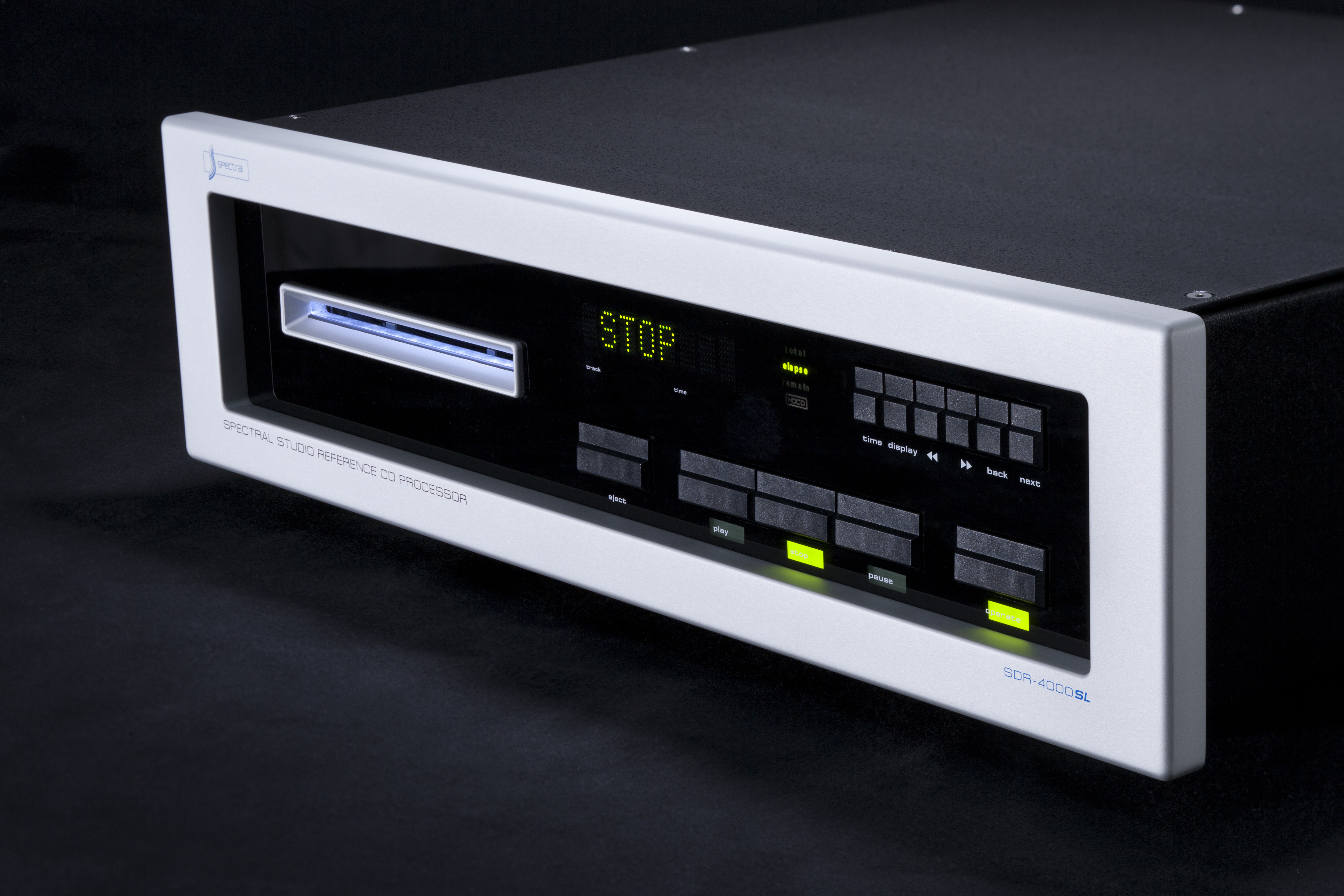
Unmatched Conversion Accuracy
Spectral's two
decades of state-of-the-art digital audio design experience are essential when
it comes to extracting maximum performance in the critical DAC stage. Digital to
analog conversion within SDR-4000SL is performed at an extraordinarily high
level of accuracy and features a Spectral-developed, double balanced
implementation of the Analog Devices AD1853 multi-bit Sigma/Delta DAC. This
unusual multi-bit double push-pull architecture is a proprietary Spectral
innovation achieving DAC resolution and accuracy unrivaled by any other system.
Directly inspired by the uncompromising discrete DAC topology of the Spectral
SDR-2000 Professional Processor, the SDR-4000SL DAC utilizes a differential
current (I/V) conversion stage with Spectral’s own dedicated DAC amplifiers.
The First Fully
Discrete DAC Amplifier
As the first analog
signal stage following the DAC converter, the DAC amplifier or I/V stage is
arguably the most critical analog signal stage in the system. The DAC amplifier
is where ‘the rubber meets the road’ so to speak and where circuit
linearity, speed and resolution are absolutely essential in determining ultimate
system sonics. Unfortunately, today’s DAC and I/V amplifiers in digital audio
components are universally implemented with low bias, low voltage IC op-amp
circuits due to their ease of design, stability and low cost. Research at
Spectral under live recording conditions indicates that the use of integrated
circuit DAC amplifiers in today’s high-end digital products results in severe
performance compromise.
Although designing a
stable, discrete circuit DAC amplifier is a challenging task, solving the
dilemma of IC compromise is a priority at Spectral. Our solution is the new SHHA
I/V module (Spectral High-Speed Hybrid Amplifier) for use after the digital
decoder. This discrete high performance amplifier is fully balanced and employs
eight amplifier sections with superlative risetime and bandwidth
characteristics. Only matched discrete through-hole fet and high-speed bipolar
transistors are capable of the degree of precision required. The SHHA DAC
amplifier module in the SDR-4000SL solves the classic IC compromise in this
critical analog stage for the very first time.
High Performance
Passive Equalization
The output
equalizer section of current digital audio components is another critical analog
circuit plagued by performance compromises. Today’s output equalizers are
fully active designs utilizing easy to implement IC filter circuits. These
circuits are very attractive in their size and cost, but subject the sensitive
signal to all the various distortions inherent in low voltage monolithic
amplification. Spectral engineers have side-stepped the performance problems of
integrated circuit filters entirely with an ingenious passive equalizer
topology. The SDR-4000SL passive equalizer is developed around a transient
perfect circuit utilizing the finest available passive components such as
handmade silver litz wire chokes and low noise bulk metal precision resistors.
Eliminating the distortions inherent in IC based equalization results in a new
level of signal purity in the SDR-4000SL.
Uncompromised Analog
The innovative, high performance output section of the SDR-4000SL is a classic example of the difference uncompromising Spectral engineering makes. Although routinely neglected in digital audio design, the line level output stage is as critical to ultimate performance as it is in high-end preamplifier. For this reason, Spectral engineers have banished typical integrated circuit compromises for state-of-the-art discrete analog amplifiers proven in our finest high-end preamplifiers. Our entire DMC-15 line level stage and power supplies have been adapted for the output section of the SDR-4000SL. This architecture utilizes the spectacular Spectral SHHA high-speed amplifier modules which have revolutionized Spectral reference preamps. This uncompromising single-ended line section completes the distinguished analog stages of the SDR-4000SL, rivaling the performance and sonic sophistication of the world’s finest high-end preamplifier designs.
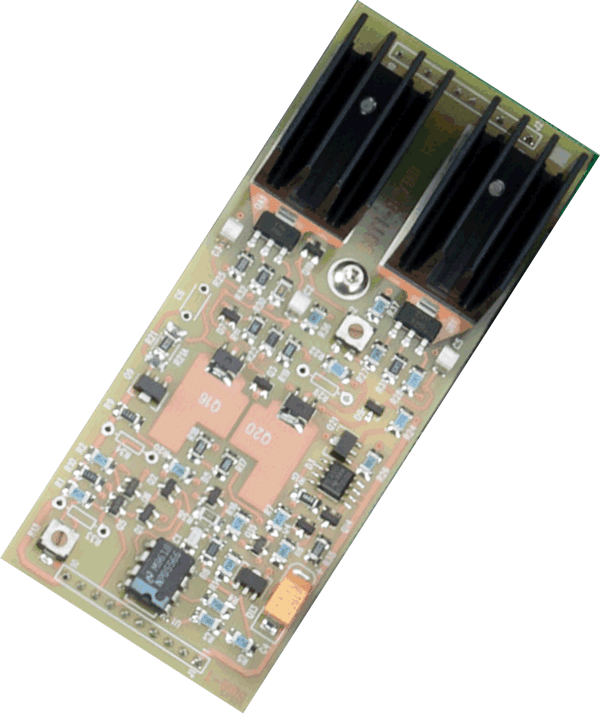
Quiet Power
The SDR-4000SL has a sophisticated array of five fully discrete power supplies to individually support each section of the player: CD drive and loader, servo circuitry, display and control system, digital system and re-clocking and for analog amplifiers. Extensive design detailing ensures that the elaborate SDR-4000SL power supply system isolates the ultra-quiet processor and analog electronics from the vagaries of all types of line-borne distortion and noise as well as eliminating all emissions from the unit which could affect other sensitive system components.
Spectral
Introduces the HDCD ‘Long Filter’
Decoding Technology
In the
SDR-4000SL CD Processor, Keith Johnson set out to redefine the performance of
the 16 bit compact disc with the most advanced components and circuit topologies
yet devised for CD reproduction. At the same time, a parallel effort by Keith
Johnson and Michael ‘Pflash’ Pflaumer was launched to develop a very
advanced digital playback filter
based on the sophisticated Pacific Microsonics HDCD software. Since
its introduction in 1995 the original PMD-200 HDCD digital filter software has
been the choice of high-end digital audio designers for their most ambitious
processors and players. This was no accident. Digital designers in most high-end
companies recognised the unrivaled performance of the PMD-200. Although
conventional digital filter designs appear in every type of digital product
today, custom digital audio filters are not designed every day, particularly to
ultimate audio standards. The Microsonics discrete HDCD filter chip gave
high-end designers the most powerful filter processor with the most
sophisticated algorithms yet developed for 16 bit digital playback.
Now
Spectral introduces the next generation of high performance filters. The new
HDCD ‘Long Filter’ technology takes digital playback to the next level with
the fastest sampling and most filter poles ever assembled for digital audio
playback. With new software designed to run on todays most powerful 32 bit
processors, the Spectral ‘Long Filter’ utilizes floatingpoint math for
higher accuracy and features the processing power of eight PMD-200s for vastly
faster calculations.
The
Spectral HDCD ‘Long Filter’ is Today's Most Advanced 16 Bit Decoding
Software
The
original HDCD filter correction strategy was designed by ‘Pflash’ Pflaumer
around Keith Johnson’s psycho acoustic models and implemented in the fastest
processors of the mid-1990s. The vastly higher sampling rate and memory storage
of the ‘Long Filter’ make possible a much more extended version of Keith
Johnson’s sonic model and more precise corrections. These advanced correction
algorithms improve timing accuracy at all frequencies we hear. By anticipating
time shift and producing an opposing response program, time dispersion is
greatly corrected adding the third dimension to filter math that reveals more
life, sparkle and dimensionality. In a day and age of maturing digital audio
technology, cost reduction and component integration, (think of todays premium
sigma-delta type DAC chips with self-contained filter programs which lower costs
and reduce chip counts) there is the unexamined belief that digital audio filter
programs have attained a high degree of accuracy and refinement, especially in
highend and studio applications. The unfortunate truth is, virtually all digital
audio products from mid-fi to the most expensive high-end luxury and prosound
units all use most of the same commodity filter technology. Since the digital
audio chip industry has moved on to standardized, prepackaged filter programs,
high-end component designers are left with few options but to hope for the best
and assume these packaged filters are more than “good enough”.
The
Spectral ‘Long Filter’ Makes Compact Disc a
High-Resolution Medium
This is not the first time we have encountered the “perfect sound forever” assumptions in the attitudes of digital audio designers. After evaluating the performance of the most ambitious DAC/filter programs available under dynamic recording and playback conditions, Spectral engineers found filter sonics to be seriously compromised even for the most non-critical applications. Clearly, filter design compromises are holding back digital sound quality in most digital audio products. The Spectral HDCD ‘Long Filter’ is our solution for this vital link in the digital decoding chain and arguably the first significant step forward in high-performance digital audio filter design in over a decade. The Spectral HDCD ‘Long Filter’ makes the compact disc a high-resolution medium.
The
Spectral UltraDrive High Performance Optical Drive Redefines Data
Precision
Keith
Johnson’s experience in evaluating and testing optical disc drives for video
and audio use has few equals. In the 1970s Keith Johnson and Paul Greg joined
development work which resulted in optical tracking servo systems used in the
original laser disc systems, the forerunner to the compact disc drive. Later
Keith worked intensively with Philips and Teac/Esoteric to develop the modified
premium CD drives used in Spectral SDR components built in the 1980s and 1990s.
Keith’s extensive experience with optical drives and servos continued as he
evaluted CD drive performance in HDCD licensees throughout the audio industry.
Finally, Keith has spent the better part of a decade evaluating manufacturer
prototypes for a custom, high-performance drive exclusively for Spectral. Now,
after years of development by Keith and our manufacturing partner, the new
Spectral UltraDrive is finally here.
A
Fundamentally
The Spectral UltraDrive is based on an unusual CD ROM computer drive designed for critical avionics and commercial applications. This high-rel drive stands out from the countless number of drives we evaluated for its superior performance and build quality and is rated at over twice the cycle life of any other premium drive built today. As most remaining optical drives are decontented mass-market models, destined to be phased out in the immediate future, our drive is contracted to be built for avionics and critical military use for many years to come with component parts support extending futher still. In all probability this drive will be one of the few fully drives many years from now. By starting with the most robust and overbuilt CD ROM drive on the market we can assure our customer reliable and extended service life. To minimize the service requirements our drive is a beltless design to eliminate the inevitable need for belt replacement found in most CD drives, including our own earlier SDR components. Our drive also features an extended life laser readhead with full glass optics to furtherreduce service needs. Perhaps the most unusual aspect of the new Spectral UltraDrive is something that it does not have. The UltraDrive has been engineered and tested to be clocked by an external oscillator, it has no clock reference of its own. Spectral engineers then clock directly from the DAC master clock for the highest possible timing accuracy. Slaving the optical drive directly from the DAC clock is acknowledged as the most precise method possible to control data output, but in the real world this ideal approach is never actually implemented in production, the optical drive manufacturers are unwilling to produce drives without clock systems they can test. Spectral UltraDrive is different. We have co-developed the drive electronics to be run exclusively by our own external clock reference. The result is the first optical drive designed and optimized for external clocking.
Modular
Approach Addresses Service Concerns
Having
built reference CD playback components for over twenty-five years, we are
interested in more than high performance alone. In the final edition of the
SDR-4000SL we wanted to address the challenge of mechanical service on a more
fundamental basis. In the past the finest available CD drives have also been the
largest and most complex, with elaborate loading, damping and suspension
systems. Servicing for the replacement of wear items like laser readheads and
drive belts could require extensive disassembly and re-alignment. Our goal in
the SDR-4000SL was to eliminate as much of the time and expense as possible.
We have designed the UltraDrive as an easily replaceable, self-contained modular
system. The UltraDrive is plugged directly into the master clock reference and
firmly mounted to a critically damped foundation. The fully modular UltraDrive
optical transport makes practical dealer and field-serviceability a reality for
our SDR-4000SL for the first time.
The
Spectralock Master Clock Architecture
The
pursuit of ever improving clocking accuracy and lower timing error and jitter
have been a fundamental priority in every Spectral SDR component since the
original. Although generations of high-end audio digital components have
previously proclaimed the “banishment” of jitter, careful listening
evaluation of even the best of these reveals the clear sonic effects of these
insidious distortions. We are under no casual illusion regarding this difficult
technical issue: audible consequences of insufficiently precise data timing and
noise-induced jitter are still the foremost reason that digital audio fails to
deliver on its musical promise. Our new Spectralock Master Clock architecture is
Keith Johnson’s most ambitious assult yet on jitter and its sonic
consequences. The Spectralock data management system is fully integrated to the
UltraDrive optical disc transport. It is completely enclosed and shielded and
like other parts of the SDR-4000SL, its powering floats as if from batteries.
Signal transmissions are balanced to self-cancel digital activity and data
outputs are slaved from the ultra-precision crystal that direct clocks the
conversion to analog signals at the DAC. These design features hide the optical
transport and its servo activity to assure always accurate filter processing and
prevent any intrusion of the drive to our silent conversion environment. The
carefully shielded and interfaced UltraDrive transport contains a fast loading -
quick to play data buffer. The Spectralock system grabs the information bursts
from the CD and outputs a continuous time invariant stream of data. Twin
synchronization loops slave both operations to the DAC master clock so that
motors, tracking servos and other activity that would damage timing accuracy are
sequestered to create a time stable stealth platform. The Spectralock system is
considerably more precise than even the best master clock box systems which have
noise induced jitter problems as
a result of the long clock cables. Spectral’s
fast lock synchronization loops,
quick loading buffer and effective
isolation strategy all combine to make an ideal
platform for pristine timing for processing and conversion. We achieve an industry leading 120 dB signal-to-noise with
better than one-part-per-million data
accuracy. There is absolutely no presence of any other activities such as ripples, noises, stray fields or any
intrusions to the digital waveforms. Our new Spectralock/Ultradrive
system produces signals that are
an exact replica of those making the recording - nothing added,
nothing subtracted or changed.
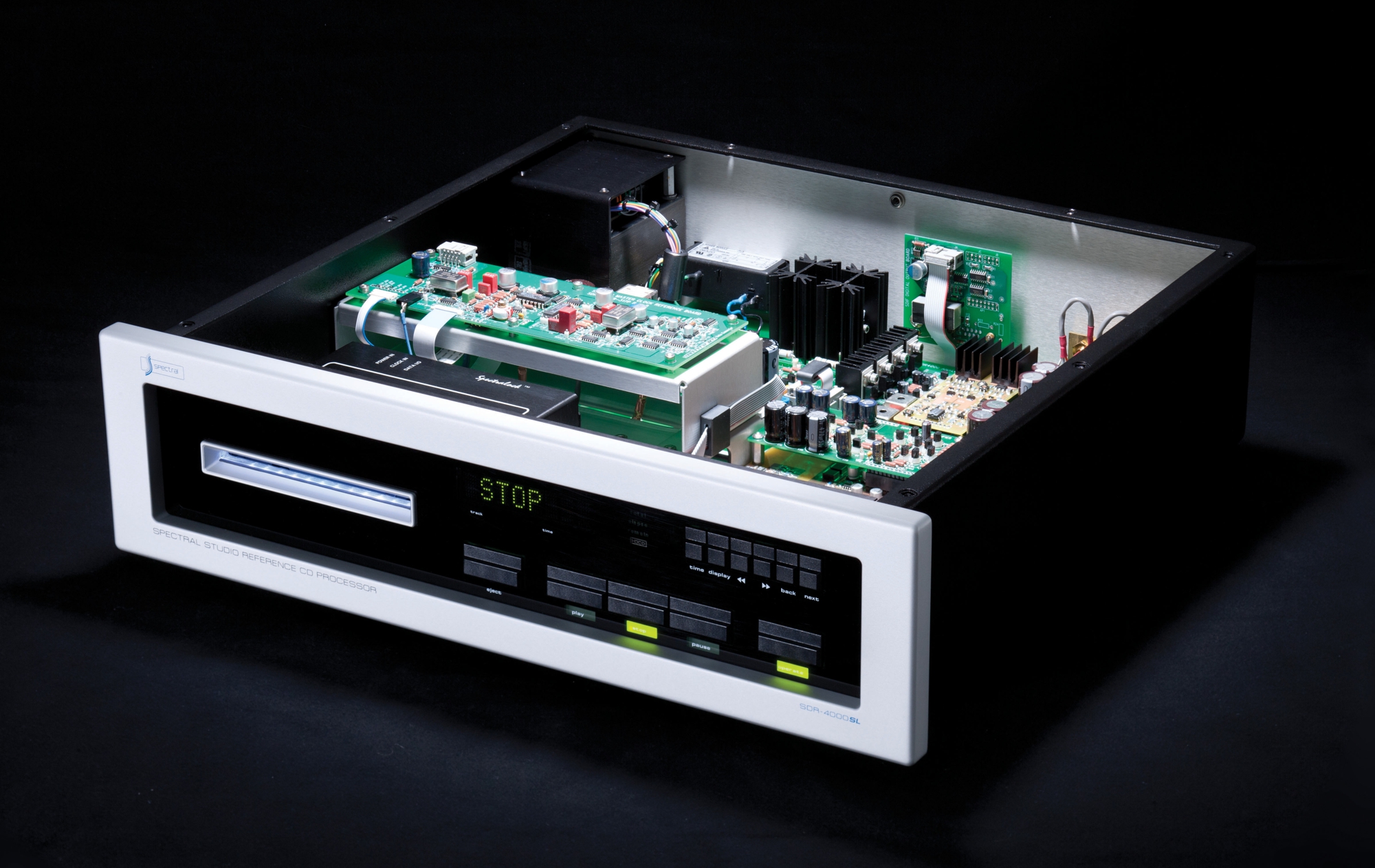
Quality
In Depth
Engineering
refinement in the SDR-4000SL CD Processor extends to the quality of the user
interface as well. The SDR-4000SL front panel is a model of understated elegance
and usability, in the Spectral tradition, with a hand polished satin front panel
and machined acrylic construction. Large alphanumeric displays monitor the CD
drive and playback functions, allowing visual confirmation of remote operations
from a distance.
Refinement
is also reflected in the convenience and precision of the SDR-4000SL remote
control. The deluxe remote duplicates SDR-4000SL front panel controls and offers
full input keypad and repeat functions. All metal construction of fully machined
aluminum alloy components and premium powder coat finishing ensures rugged
durability. The instrumentation grade momentary switching used on the SDR-4000SL
front panel is also used on the SDR-4000SL remote for positive actuation and
long operation. Two infrared transmitter diodes maximize signal power for
extended operating range.
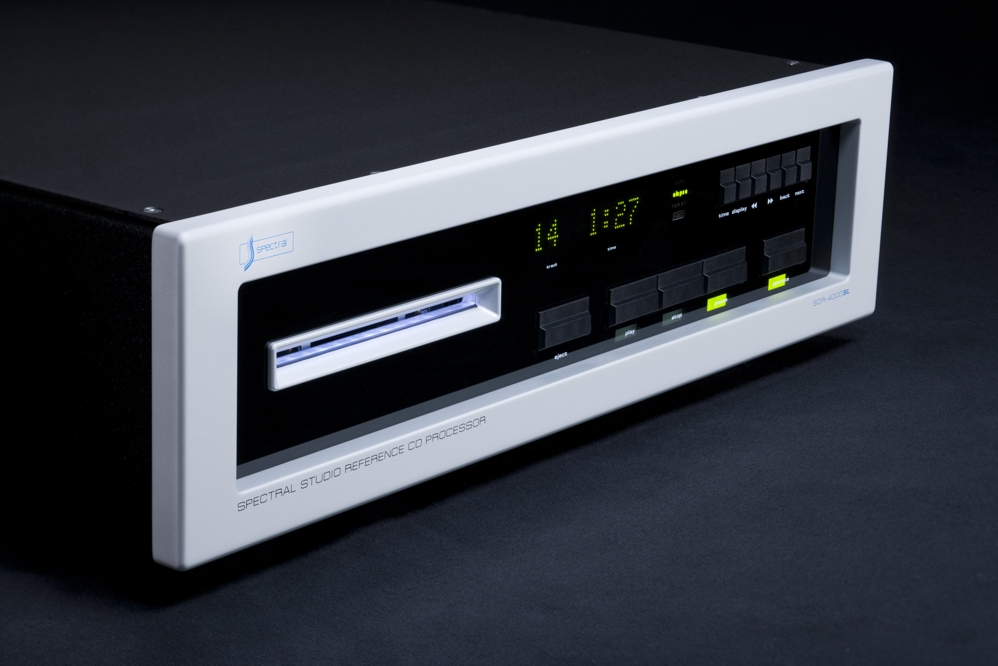
The Ultimate Reproduction of Compact Discs
The SDR-4000SL Reference CD Processor is designed to achieve the finest reproduction ever from compact disc recordings. As the prevailing medium of high-fidelity music recordings currently available, state-of-the-art reproduction from compact disc is a Spectral engineering priority. Many performance compromises long indigenous to even the finest digital audio design have been eliminated for the first time. Utilizing a sweeping array of technological advances, the Spectral SDR-4000SL CD Processor extracts new musical coherence and life from fine compact disc recording, proving clear insight into important musical performances of our time.
Is the SDR-4000SL our last reference
CD player? In the Spectral design language, SL models are usually the final
versions in an SDR series, and this is the case with the SDR-4000SL. In the
here and now, we are confident that there is little possible regardless of cost
that could improve the performance of the Spectral SDR-4000SL in any
significant way. We believe this is one way to define a true reference
instrument. It is also why the SDR-4000SL is worth listening to and owning.
Click Here to return to the Spectral Audio System